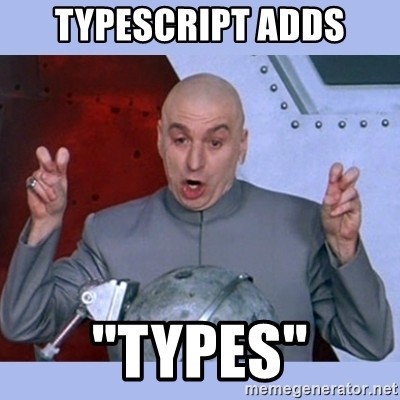
Introduction
TypeScript에서 Interface는 일반적으로 타입 체크를 위해 사용되며 변수, 함수, 클래스에 사용할 수 있다. 인터페이스는 여러가지 타입을 갖는 properties로 이루어진 새로운 타입을 정의하는 것과 유사하다. 잍너페이스에 선언된 프로퍼티 또는 메소드의 구현을 강제하여 일관성을 유지할 수 있도록 하는 것이다. ES6는 인터페이스를 지원하지 않지만, TypeScript는 인터페이스를 지원한다.
Variables & Interface
Interface는 변수의 타입으로 사용할 수 있다. 이때 인터페이스를 타입으로 선언한 변수는 해당 인터페이스를 준수하여야 한다. 새로운 타입을 정의하는 것과 유사하다.
객체에 인터페이스 사용하기
interface Todo {
id: number;
content: string;
completed: boolean;
}
// 변수 todo의 타입으로 Todo 인터페이스를 선언하였다.
let todo: Todo;
// 변수 todo는 Todo 인터페이스를 준수하여야 한다.
todo = { id: 1, content: 'typescript', completed: false };함수의 매개변수에 인터페이스 사용하기
인터페이스를 사용하여 함수 파라미터의 타입을 선언할 수 있다. 이때 해당 함수에는 함수 파라미터의 타입으로 지정한 인터페이스를 준수하는 인수를 전달하여야 한다. 함수에 객체를 전달할 때 복잡한 매개변수 체크가 필요없어서 매우 유용하다.
interface Todo {
id: number;
content: string;
completed: boolean;
}
let todos: Todo[] = [];
// 파라미터 todo의 타입으로 Todo 인터페이스를 선언하였다.
function addTodo(todo: Todo) {
todos = [...todos, todo];
}
// 파라미터 todo는 Todo 인터페이스를 준수하여야 한다.
const newTodo: Todo = { id: 1, content: 'typescript', completed: false };
addTodo(newTodo);
console.log(todos)
// [ { id: 1, content: 'typescript', completed: false } ]Function & Interface
인터페이스는 함수의 타입으로 사용할 수 있다. 함수의 인터페이스에는 타입이 선언된 파라미터 리스트와 리턴 타입을 정의한다. 함수 인터페이스를 구현하는 함수는 인터페이스를 준수하여야 한다.
interface SquareFunc {
(num: number): number;
}
// 함수 인테페이스를 구현하는 함수는 인터페이스를 준수하여야 한다.
const squareFunc: SquareFunc = function (num: number) {
return num * num;
}
console.log(squareFunc(10)); // 100Class & Interface
클래스 선언문의 implements 뒤에 interface를 선언하면 해당 클래스는 지정된 interface를 반드시 구현하여야 한다. 이는 인터페이스를 구현하는 클래스의 일관성을 유지할 수 있는 장점을 갖는다.
인터페이스는 프로퍼티와 메소드를 가질 수 있다는 점에서 클래스와 유사하나 직접 인스턴스를 생성할 수는 없다.
interface ITodo {
id: number;
content: string;
completed: boolean;
}
// Todo 클래스는 ITodo 인터페이스를 구현하여야 한다.
class Todo implements ITodo {
constructor (
public id: number,
public content: string,
public completed: boolean
) { }
}
const todo = new Todo(1, 'Typescript', false);
console.log(todo);interface는 프로퍼티뿐만 아니라 메소드도 포함할 수 있다.
단, 모든 메소드는 추상 메소드여야 한다. 인터페이스를 구현하는 클래스는 인터페이스에서 정의한 프로퍼티와 추상 메소드를 반드시 구현하여야 한다.
interface IPerson {
name: string;
sayHello(): void;
}
/*
인터페이스를 구현하는 클래스는 인터페이스에서 정의한 프로퍼티와 추상 메소드를 반드시 구현하여야 한다.
*/
class Person implements IPerson {
// 인터페이스에서 정의한 프로퍼티의 구현
constructor(public name: string) {}
// 인터페이스에서 정의한 추상 메소드의 구현
sayHello() {
console.log(`Hello ${this.name}`);
}
}
function greeter(person: IPerson): void {
person.sayHello();
}
const me = new Person('Lee');
greeter(me); // Hello Lee덕 타이핑(Duck Typing)
주의해야 할 것은 인터페이스를 구현하였다는 것만이 타입 체크를 통과하는 유일한 방법은 아니다. 타입 체크에서 중요한 것은 값을 실제로 가지고 있는 것이다. 이해가 어려울 수 있으므로 예를 들어 설명한다.
interface IDuck { // 1
quack(): void;
}
class MallardDuck implements IDuck { // 3
quack() {
console.log('Quack!');
}
}
class RedheadDuck { // 4
quack() {
console.log('q~uack!');
}
}
function makeNoise(duck: IDuck): void { // 2
duck.quack();
}
makeNoise(new MallardDuck()); // Quack!
makeNoise(new RedheadDuck()); // q~uack! // 5- 인터페이스 IDuck은 quack메소드를 정의하였다.
- makeNoise 함수는 인터페이스 IDuck을 구현한 클래스의 인스턴스 duck을 인자로 전달받는다.
- 클래스 MallarDuck은 인터페이스 IDuck을 구현하였다.
- 클래스 RedheadDuck은 인터페이스 IDuck을 구현하지는 않았지만 quack 메소드를 갖는다.
- makeNoise 함수에 인터페이스 IDuck을 구현하지 않은 클래스 RedheadDuck의 인스턴스를 인자로 전달하여도 에러 없이 처리된다.
TypeScript는 해당 인터페이스에서 정의한 프로퍼티나 메소드를 가지고 있다면 그 인터페이스를 구현한 것으로 인정한다. 이것을 덕 타이핑(Duck Typing) 또는 구조적 타이핑(structural typing)이라 한다.
인터페이스를 변수에 사용할 경우에도 덕 타이핑은 적용된다.
interface IPerson {
name: string;
}
function sayHello(person: IPerson): void {
console.log(`Hello ${person.name}`);
}
const me = { name: 'Lee', age: 18 };
sayHello(me); // Hello Lee변수 me는 인터페이스 IPerson과 일치하지는 않는다. 하지만 IPerson의 name 프로퍼티를 가지고 있으면 인터페이스에 부합하는 것으로 인정된다.
인터페이스는 개발 단계에서 도움을 주기 위해 제공되는 기능으로 자바스크립트의 표준이 아니다. 따라서 위 예제의 TypeScript 파일을 자바스크립트 파일로 트랜스파일링하면 아래와 같이 인터페이스가 삭제된다.
function sayHello(person) {
console.log("Hello " + person.name);
}
var me = { name: 'Lee', age: 18 };
sayHello(me); // Hello Lee선택적 프로퍼티
인터페이스의 프로퍼티는 반드시 구현되어야 한다. 하지만 인터페이스의 프로퍼티가 선택적으로 필요한 경우가 있을 수 있다. 선택적 프로퍼티(Optional Property)는 프로퍼티명 뒤에 ?를 붙이며 생략하여도 에러가 발생하지 않는다.
interface UserInfo {
username: string;
password: string;
age? : number;
address?: string;
}
const userInfo: UserInfo = {
username: 'ungmo2@gmail.com',
password: '123456'
}
console.log(userInfo);이렇게 선택적 프로퍼티를 사용하면 사용 가능한 프로퍼티를 파악할 수 있어서 코드를 이해하기 쉬워진다.
인터페이스 상속
인터페이스는 extends 키워드를 사용하여 인터페이스 또는 클래스를 상속받을 수 있다.
interface Person {
name: string;
age?: number;
}
interface Student extends Person {
grade: number;
}
const student: Student = {
name: 'Lee',
age: 20,
grade: 3
}복수의 인터페이스를 상속받을 수도 있다.
interface Person {
name: string;
age?: number;
}
interface Developer {
skills: string[];
}
interface WebDeveloper extends Person, Developer {}
const webDeveloper: WebDeveloper = {
name: 'Lee',
age: 20,
skills: ['HTML', 'CSS', 'JavaScript']
}인터페이스는 인터페이스 뿐만 아니라 클래스도 상속받을 수 있다. 단, 클래스의 모든 멤버(public, protected, private)가 상속되지만 구현까지 상속하지는 않는다.
class Person {
constructor(public name: string, public age: number) {}
}
interface Developer extends Person {
skills: string[];
}
const developer: Developer = {
name: 'Lee',
age: 20,
skills: ['HTML', 'CSS', 'JavaScript']
}